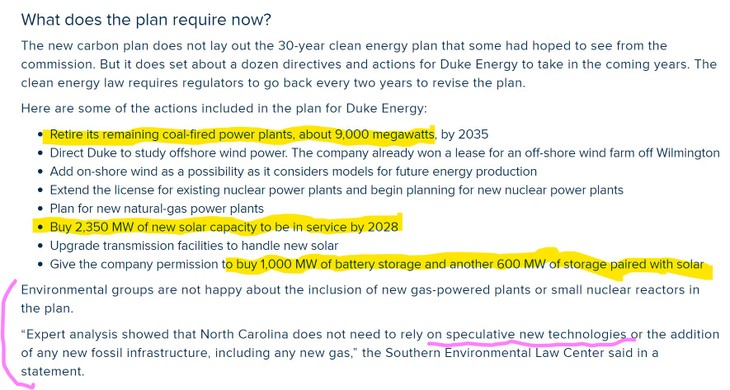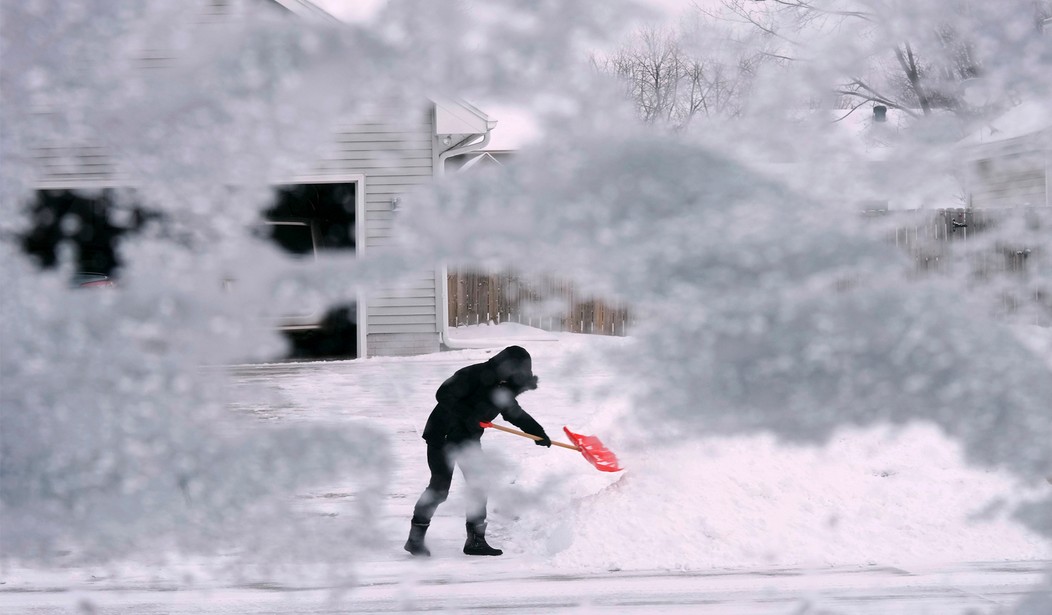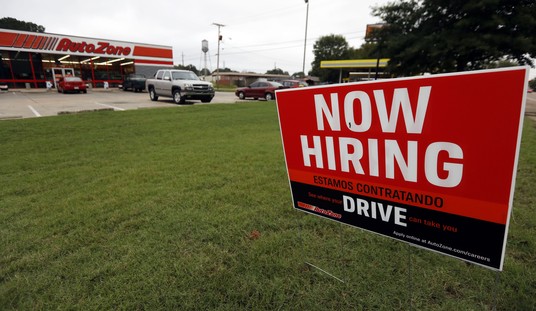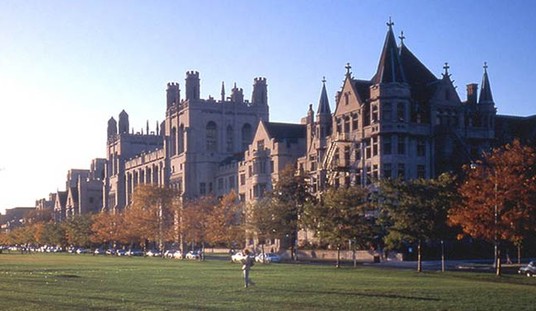Talk about making friends and influencing people. Duke Energy, one of the main power providers for the Carolinas, really stepped in it over the Christmas weekend. For the first time in the energy company’s history, they were forced to institute rolling blackouts and beg their customers to conserve power…in the middle of a ferocious winter storm on Christmas Eve.
For the first time in the company’s history, Duke Energy enacted rolling blackouts on Christmas Eve amid freezing temperatures. The move left half a million customers without power. And on Tuesday, the company issued an apology, attributing several compounding factors as its reasoning.
“I want to express how sorry we are for what our customers experienced. We own what happened,” said Julie Janson, executive vice president and CEO for Duke Energy Carolinas. “Making rotating outages [was] necessary to protect the integrity of the grid and mitigate the risk of serious failure affecting a far greater number of customers for longer time frames.”
…Equipment failure due to severe cold and inaccurate modeling contributed to the outages. Duke said there was extremely high demand and not enough supply of power.
Three of Duke’s power plants — Dan River, Mayo and Roxboro — had to cut its operations in half because instrumentation lines froze, causing Duke to lose 1,300 megawatts of power. This happened despite these lines having weatherization measures.
It turns out the best-laid plans gang aft a-gley when the folks you’ve contracted with to back you up are experiencing the same winter storm and, more importantly, are in the same lousy shape.
…Duke tried to increase its supply by buying power from nearby utility providers, like PJM Interconnection. However, PJM and other companies were having similar problems because of the cold, so that power never came through.
Finally, Duke was relying on a modeling system that is used to predict customer demand.
On the evening of Dec. 23, this model projected having enough energy production reserves to meet peak demand the next morning.
That estimate turned out to be wrong…
…Officials said the weather over the holiday weekend brought the coldest temperatures in a December in North Carolina since the 1980s.
Coldest “since the 1980s,” huh? So it’s been winter in the Carolinas before, huh? I know for a fact one of the coldest winters I’ve ever experienced was in North Carolina, shivering in a house in Jacksonville. Part of it was the outside temps – in the low 20s – part of it was acclimating after 12 years in SoCal, but the biggest portion of it was due to a vile thing called a “heat pump.” Something I’d never encountered before and hope to never ever again. Cold air blowing on your leg from the register in the floor with snow falling outside will scar you that way.
It turns out that heat pumps could be feeding a good portion of Duke Energy’s, the TVA’s, and, by extension, their customers’ woes. There’s been an explosion in the use of them across the South and they run on electricity.
Big Growth in Electric Heat Set Stage For Blackouts in US South
The states hit hardest by blackouts in last week’s winter storm have significantly increased reliance on heating homes with electricity over the last decade, putting more strain on the power grid when temperatures plummet.
The number of households using electric heat in Tennessee, North Carolina and South Carolina increased by about 20% from 2009 to 2020, according to government data that survey a sample of households. The generating capacity of power plants in the region, meanwhile, has remained relativity flat and increasingly dependent on natural gas.
…“We have moved too swiftly over the past two decades to electrify residential heating,”
said Pat Wood, chief executive officer of Hunt Energy Network and former chairman of the Federal Energy Regulatory Commission. “When that is combined with poorly insulated housing and low-efficiency appliances, we tax all of our resources across the board.”
…The push to electrify household appliances and heating has changed consumption patterns and created regions where electricity demand now peaks in both summer and winter, according to Sanjeet Sanghera, head of grids and utilities at BloombergNEF. That’s a shift from the past when electricity demand peaked in the summer due to air conditioner use but not in the winter as homes burned natural gas or oil for heat.
Of course, the electrical utilities fed this push with massive rebates for heat pumps and all-electric houses, so they are in good part responsible for the shift.
And much of the problem is due to use of heat pumps that are not "cold weather heat pumps", so they convert to inefficient resistance heat in severe cold. The utility in reference gives incentives for heat pumps, but no extra incentive for the cold weather kind. Bad plan.
— Brad Rouse (@BradRouse74) January 3, 2023
You would think with the numbers of people migrating into warmer, friendly southern states, the utilities would be keeping abreast of current events and adding additional power resources for all the gadgets they’ve written rebate checks for, no?
No.
…In Tennessee, the number of households using electric heat has increased by about 22% from 2009 to 2020, driven in part by population growth, according to government data. Over that same time period, the percent of households dependent on electric heating jumped to 69% from 63%, the data show.
That rise in electric heating demand came as Tennessee’s total power generation remained largely unchanged…
… In North and South Carolina, which were also hit by blackouts as energy use overwhelmed the grid, the number of homes using electric heat rose about 20% from 2009 to 2020, the data show. The total overall percent of households in those states relying on electric heat also climbed from 65% in 2009 to 70% in 2020.
Over that same time period, the total power supplies for the two states grew at just 2%, with coal being displaced mostly by natural gas units and some solar farms, the data show.
Classic. Powered by “some solar farms” which are always at their peak power in the depths of winter, less mind a blizzard. Pfft. This is not a long-term power generation plan, especially for the sheer number of people moving into the region. In an earlier post, I ran down the problems the TVA was having in their push to transition to renewables. I wonder if Duke Energy is going to be called upon to rethink the plan they announced a year ago in February?
Duke Energy plans to exit all coal, double renewables
Duke Energy Corp. intends to close the rest of its coal plants by 2035 and more than double its renewable capacity by 2030 as part of a massive — and expensive — clean energy push.
Duke said yesterday it expects to spend over $130 billion in the next decade on projects and investments, 80 percent of which will go toward cleaner sources as it overhauls the grid to support more renewable energy and new technologies. It has added $4 billion to a five-year spending plan, as well, which is now about $63 billion.
The company will shutter 11 remaining coal-fueled plants, including six across North Carolina and South Carolina, one in Florida and four in the Midwest. Duke now owns, operates or uses energy from more than 10,000 megawatts of solar and wind and wants to more than double that number to 24,000 MW by 2030.
Considering how renewables ≠ reliable and they’ve admitted having problems getting them in any event…
…But the company has faced challenges around solar panels and other supplies not being ready by a certain time frame needed to complete a project.
…wouldn’t it be prudent to hit the TIME-OUT button and get this %$&# squared away?
Nope, nope, nope. Can’t. Gotta a deadline, hello, thanks to the N.C. state legislature.
Brilliant move, guys.
North Carolina’s Democratic governor and its Republican-controlled Legislature have reached a deal on a sweeping energy bill that could dramatically boost renewable electricity in the state.
The bipartisan-backed legislation, years in the making, is designed to slash the Tar Heel State’s carbon emissions 70 percent by 2030 en route to reaching a 2050 net-zero goal.
…The carbon plan requires Duke Energy to retire its remaining coal-fired power plants by 2035, build new solar farms and battery storage. But environmental advocates had hoped the commission would go further to require the company to add more clean energy to North Carolina’s power grid.
This isn’t Duke Energy’s doing from this point forward. It’s those guys in the statehouse mandating that you are kept in the cold and dark like mushrooms. Their “plan” will never, ever produce enough reliable energy to consistently heat homes and keep the lights on everywhere ever again. Just like the TVA, they will be retiring – in some cases outright demolishing – reliable coal-fired plants and taking thousands of MW offline before they can even get a fraction of that power replenished through unreliable solar installation. Oh. Plus schmaybe wind. And unicorn farts.
The numbers don’t begin to add up – and environmental activists calling out nuclear for being a “speculative technology” is a sweet, sweet irony in itself.

The more people move to the Carolinas, the worse it’s going to get.
Now, what happens when they add all those EVs Brandon wants you to buy to the chaos the tens of thousands of additional heat pumps are causing?
I’d say the grid goes up in flames, but I don’t think there’ll be enough juice for a spark.







Join the conversation as a VIP Member